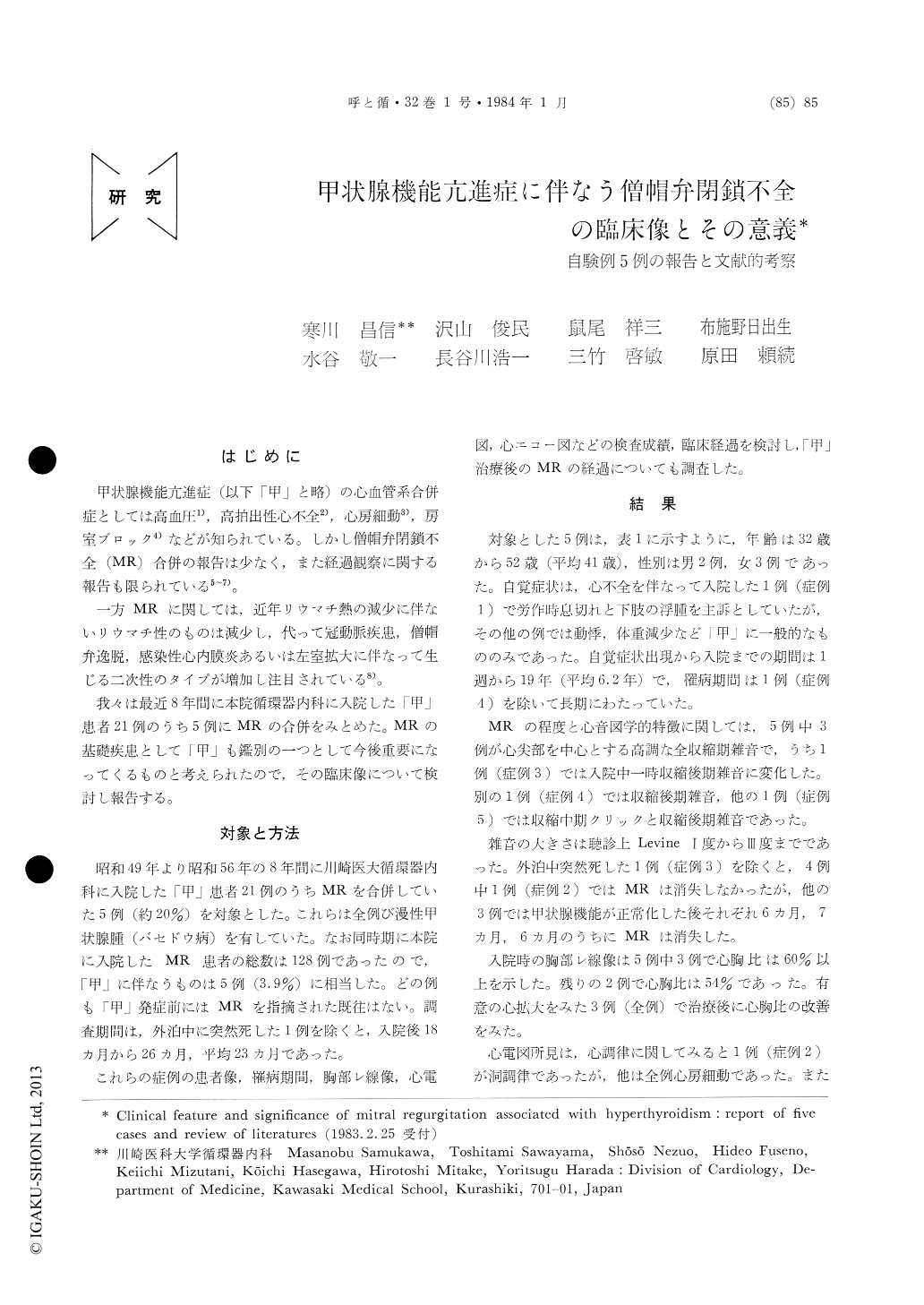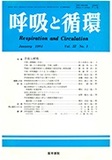Japanese
English
- 有料閲覧
- Abstract 文献概要
- 1ページ目 Look Inside
はじめに
甲状腺機能亢進症(以下「甲」と略)の心血管系合併症としては高血圧1),高拍出性心不全2),心房細動3),房室ブロック4)などが知られている。しかし僧帽弁閉鎖不全(MR)合併の報告は少なく,また経過観察に関する報告も限られている5〜7)。
一方MRに関しては,近年リウマチ熱の減少に伴ないリウマチ性のものは減少し,代って冠動脈疾患,僧帽弁逸脱,感染性心内膜炎あるいは左室拡大に伴なって生じる二次性のタイプが増加し注目されている8)。
The clinical feature and course in five cases of mitral regurgitation (MR) associated with hyperthyroidism, observed in the last eight years, were studied, and compared with previously reported cases.
The results of this study obtained were as follows.
1) Most cases with MR were found to have longer clinical history of hyperthyroidism with mean of 6.2 years than that without MR. 2) On auscultation and phonocardiogram, the loudness of the regurgitant murmurs ranged from the grade I/VI to III/VI, and various types of the murmur were observed : high-pitched, apical pansystolic murmur in 3 cases, late-systolic murmur in 1, and mid-systolic click followed by late-systolic murmur in 1. 3) The electrocardiogram disclosed atrial fibril-lation in 4 cases, ventricular premature contraction in 3, left ventricular high voltage in 2 and ST-T change suggesting myocardial damage in 2. While chest X-ray film revealed cardio-thoracic ratio of more than 60% in 3 cases, the echocardiogram showed the enlargement of the left ventricular cavity in only one case. 4) In 3 out of 4 cases , the murmurs disappeared after appropriate medical therapy, and MR associated with hyperthyroidism may be transient and reversible. 5) Because MR was only a main clinical manifestation in one case, the patient was referred to our clinic, initially thought to be an indication for mitral valve replacement, though his regurgitant murmur completely disappeared 6 months later with medical therapy only. 6) Papillary muscle dysfunction, and partially, mitral valve prolapse due to hyperthyroidism were also demonstrated as possible etiology for MR, as also suggested by previously reported cases.

Copyright © 1984, Igaku-Shoin Ltd. All rights reserved.


